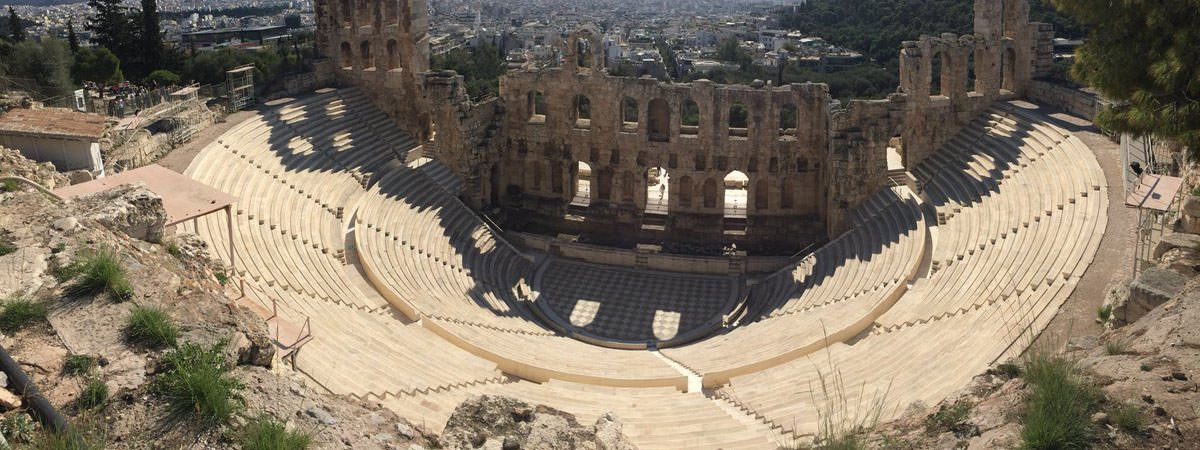In the ancient Greek religion, Dionysus was the God of winemaking, grape harvest and religious frenzy. He was also closely associated with festivity, theatre, celebratory processions, ecstatic dance, fertility and insanity. The origins of Dionysus remain a mystery though the mysterious ecstatic rituals associated with him may be observed in other more ancient cultures. In Greece, the worship of his cult traces back at least to the Mycenaean period. Dionysus is strongly associated with symbols; like the bull, serpent, tigers/leopards, thyrsus, ivy, vines, fig, wine and grapes. He is mostly seen accompanied by his retune of satyrs, maenads, centaurs and sileni. Dionysia was a prominent festival in Athens which was dedicated to the God. In Rome, he came to known as Bacchus. Here, the Bacchanalia was the prominent private festival celebrated in worship of the God. Bacchus was also seen as the founder of the Roman Triumph processions. Know more about the Greek God of wine with these 10 facts.
Notes:-
Mycenaean period: Last phase of the Bronze Age in Ancient Greece, spanning the period from approximately 1750 to 1050 BC.
Near East: A region roughly corresponding to the modern Middle East
Thyrsus: A wand or staff of giant fennel covered with ivy vines or leaves usually topped with a pine cone
Satyrs: Drunken woodland gods represented in Greek art as a man with a horse’s ears and tail, in Roman art with goat’s ears, tail and horns.
Maenads: Female followers of Bacchus, traditionally associated with divine possession and frenzied rites.
Sileni: A woodland spirit usually depicted as a drunken old man with ears (and sometimes legs and tail) like those of a horse.
Roman Triumph: A civil ceremony and religious procession of ancient Rome, usually held to publicly celebrate and sanctify military success.
#1 Dionysian Cult Followed Mysterious Practices To Achieve Ecstatic States
With the available evidence, the origins of the cult of Dionysus cannot be traced with any certainty. A mysterious ecstatic cult, the Dionysian rituals were known to use various intoxicants and elements like dance, music and spirit possession to induce trance like states. Further, they attempted to remove social inhibitions and civilizational rules and liberate the individual to his natural form. With its emphasis on sensuality and sexual love, the Dionysus cult presented a marked affinity to the feminine nature and its appeal was primarily to women. It was among women that it found its most loyal supporters. Their enthusiasm was the foundation of its power.
Main Sources:-
Kerényi, Karl (1996). “Dionysos : archetypal image of indestructible life”. Princeton, N.J.: Princeton University Press. P130.
Aziz, Robert (1990). C.G. Jung’s Psychology of Religion and Synchronicity (10 ed.). The State University of New York Press.
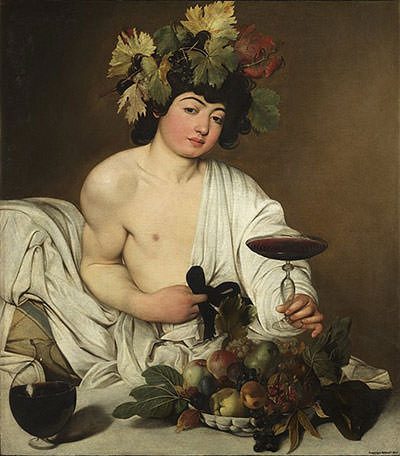
#2 His Cult May Refer To The Bacchic, Eleusinian And Orphic Mysteries
The mysteries of Dionysus are sometimes attributed to Orpheus, the legendary musician and prophet of ancient Greece. Dionysus is the most important God in Orphism. His death at the hands of the Titans forms the central myth of the religion. There is however evidence which may suggests that Orphic mysteries were borrowed from Dionysian mysteries and that Orphism may have been a reform of the earlier Dionysian religion. Certain scholars have also pointed out the similarities between the Dionysian mysteries and the mysteries of Persephone suggesting that they were together part of the same mystery religion. The Eleusinian Mysteries, dedicated to the Goddesses Demeter and Persephone, was an important religious festival during the Hellenic era. It later spread to Rome. In these mysteries, Dionysus came to be identified with the minor deity Iacchus who by varying accounts was either a son of Demeter or her husband; or a son of Persephone; or a son of Dionysus. These associations may be dated back to 5th century BCE.
Main Sources:-
Pseudo-Apollodorus, “Bibliotheca Library and Epitome”. 1.3.2
Isler-Kerényi, Cornelia. “Dionysos in Archaic Greece: An Understanding through Images”. Trans. Watson, Wilfred G.E. P5-16.
Graf Sergi︠e︡ǐ Semenovich Uvarov , Baron Antoine Isaac Silvestre de Sacy , James Christie (1817). “Essay on the Mysteries of Eleusis”. P115-124.
Notes:-
Persephone: Greek goddess of agriculture and vegetation, daughter of Demeter and Zeus (King of Olympian Gods), was the wife and queen of Hades (Ruler of the Underworld).
Demeter: Goddess of the harvest, agriculture and fertility of the earth.

#3 His Written Records Predate Ancient Greeks
Early scholars of ancient Greece understood Dionysus as a foreign deity who was reluctantly accepted into the Greek pantheon of Gods. However, recent discoveries indicate that his cult in Greece may have preceded what we know as the ancient Greek civilization. This leads us to recognize that even if his cult was imported, it was well before what was accepted before. In the early and mid 20th century, excavations carried out in and around the Palace of Nestor in Pylos have revealed the earliest written records of the Dionysian cult. Dated to around the 13th century BCE Mycenaean Greece, recovered fragments of clay tablets show his name written as di-wo-nu-su-jo (“Dionysoio” = ‘of Dionysus’) in Linear B. These may be indicative of the offerings to the deity during the period. Other references to “women of Oinoa” and “place of wine” are seen as supportive evidence to this hypothesis.
Main Sources:-
Kerényi, Karl. 1976. “Dionysus”. Trans. Manheim, Ralph. Princeton University Press. P68-69.
Brockett, Oscar Gross (2nd ed. 1974). “History of the Theater”. Boston: Allyn & Bacon. P14-15.
Notes:-
Mycenaean Greece: Estimated to 1750 to 1050 BC, it is recognized as the last phase of the Bronze Age in Greece. Home to the Mycenaean civilization that preceded the Ancient Greeks.
Palace of Nestor: Recognized as an important center in Mycenaean Greece. The archaeological site today is the best preserved palace of the times.
Linear B: A form of Bronze Age writing discovered on tablets in Crete.
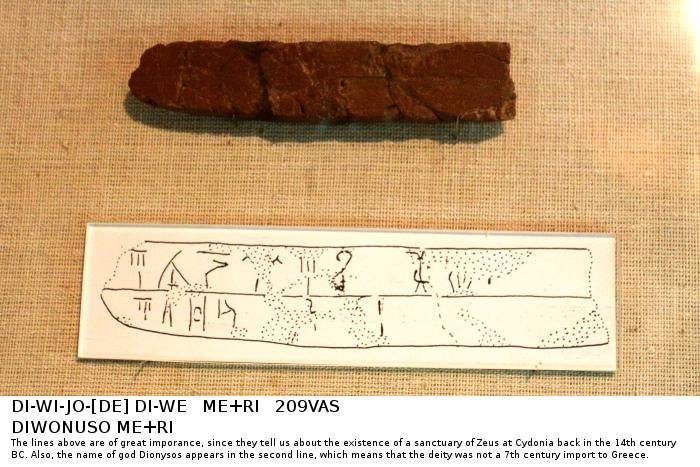
#4 The Earliest Known Image Of Dionysus Survives On Pottery
The earliest known image pertaining to Dionysus along with his name is found on a dinos by the Attic potter Sophilos, dated to around 570 BCE. The objects depicts the wedding of Peleus and Thetis, where Peleus is shown receiving the wedding guests at his house including Dionysus. Between the columns of Peleus’ house is the artist’s signature “Sophilos painted me”. Other iconography found on pottery indicates that Dionysus worship may have been well established by 7th century BCE. Not only was he the God of wine, but by this time he was associated with weddings, death, sacrifice and sexuality. Moreover, his entourage of satyrs and dancers was already established.
Main Sources:-
Isler-Kerényi, Cornelia. “Dionysos in Archaic Greece: An Understanding through Images”. Trans. Watson, Wilfred G.E. P5-16
“The Sophilos Dinos”. Museum number 1971,1101.1. The British Museum.
Notes:-
Attic: A historical region that encompasses the city of Athens. Refers to the peninsula projecting into the Aegean Sea, bordering on Boeotia to the north and Megaris to the west.
Dinos: Drinking cup, used for drinking wine in ancient Greece.
Peleus and Thetis: Peleus (Greek hero) and Thetis (sea nymph) are a famous couple in Greek myths. They are parents to another legendary Greek hero Achilles.
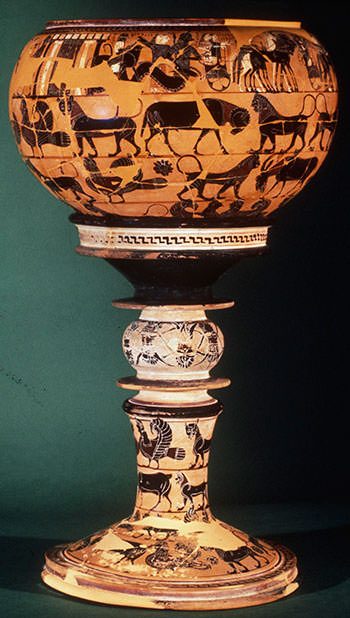
#5 He Is Often Depicted As Carrying A Thyrsus
In art, iconography and literature, Dionysus and his followers are often seen carrying a thyrsus, which is a prominent symbol associated with the God. The thyrsus is a wand or staff of giant fennel covered with ivy vines or leaves. It was usually surmounted by a pine-cone or by a bunch of vine-leaves and grapes or ivy-leaves and berries. A riband or fillet may be found attached to it, just below the pine-cone or the bunch of leaves. Considered as a symbol of prosperity, fertility and enjoyment in general, the thyrsus was a sacred instrument in the rituals and ceremonies of Greece. Dionysus used the thyrsus to turn water into wine and the tip of the thyrsus is said to have induced madness. The thyrsi is also used as a weapon (“a spear enveloped in vine-leaves”). For instance in the play, “The Bacchae” by Euripides, the main character Agave ends up accidentally killing her son and impaling his head on Dionysus’ thyrsus. Also in Ovid’s Metamorphoses Book III, Baccus (Dionysus) and his followers are seen yielding the thyrsus.
Main Sources:-
“A Dictionary of Greek and Roman Antiquities (1890), THYRSUS”. Perseus Digital Library.
Euripides. “Bacchae”. (1997). Dover Publications. Mineola, New York.
“Thyrsus symbol: Symbol of fertility, prosperity, and madness”. Ancient-Symbols.com
Notes:-
Euripides: 5th century BCE playwright (tragedy) of ancient Greece.
Ovid: Roman poet (43 BCE – 17/18 CE) from the time of Caesar (Octavian). Recognized as one of the three canonical poets of Latin literature.

#6 Several Festivals Were Held In His Honor In Ancient Greece
Dionysia, Haloa, Ascolia and Lenaia were four distinct festivals in ancient Greece that honored the God of wine and festivity. “Rural Dionysia”, which was held in the Attic month of Poseideōn (late December) is recognized as the most ancient among them. This festival celebrated the cultivation of vines; which was accompanied by singing, dancing and drinking of wine. This festival led to the establishment of the more grander festival “City Dionysia” (perhaps 6th century BCE), celebrated in month of Elapheboliōn, three months after the rural Dionysia and probably to celebrate the end of winter and the harvesting of the year’s crops. Other lesser agrarian festivals like Anthesteria, Lenaia, Ascolia and Haloa were held in between and around the two Dionysia festivals.
- Lenaia was held in Athens (January) and included processions, chanting and special rites carried out by women.
- Anthesteria was was held close to the full moon time in the month of Anthesteriōn (January/February).
- Ascolia was more of a feast held in the honor of the God, where the goat was sacrificed and games were played.
- Haloa was another agrarian festival held in the month Poseideōn (December/January), after the first harvest was over. The festival was dedicated to Demeter, Dionysus and Poseidon and was mostly observed by women.
Main Sources:-
“Ancient Athenian & Attic Festivals”. Greek News Agenda.
“Ascolia”. Sensagent Corporation.
#7 His Theater In Athens Is The Oldest Known Greek Theatre
Excavated in the 1800s by German architect and archaeologist Wilhelm Dorpfeld, the “Theatre of Dionysus” in Athens is recognized as the oldest theater in the known world. Built on the southern slope of the Acropolis hill in Athens, the ruins of the theater stood directly north of the sanctuary of Dionysus. Most of the remains preserved today belong to the monumental structuring of the theater by Lycourgos, in the second half of 4th century BCE. At this time, the theater reached its fullest extent and may have seated 17000 people. The core of the theater is estimated to date further back, to the 6th century BCE. The theater in Greece came to be closely associated with the Dionysian festival of City Dionysia (Greater Dionysia) during the 5th century BCE. Here, ancient playwrights like Sophocles, Euripides, Aeschylus and Aristophanes presented their works. These plays are considered as the initial driving force behind the development of theater in Western culture.
Main Sources:-
“Theater of Dionysus”. This is Athens.
“Ancient Greek Theaters”. UNESCO World Heritage Centre.
Ross, Stewart (1999). “Greek Theater”. P. Bedrick Books. Lincolnwood. P7-48
Brockett, Oscar Gross (2nd ed. 1974). “History of the Theater”. Boston: Allyn & Bacon. pp. 15–26.
Notes:-
Lycourgos (390 – 324 BCE): A known speech writer, orator and administrator of Ancient Greece.
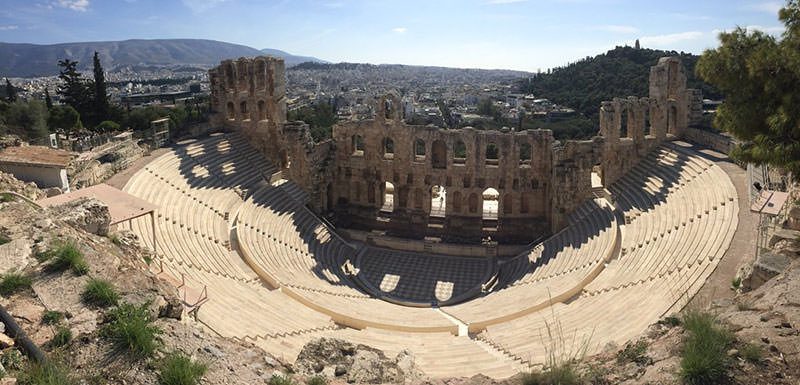
#8 The Romans Identified Dionysus As Bacchus
In the ancient Roman mythology, ‘Liber Pater’ (the free father) was the God of wine, fertility and freedom. Liber was the patron God of the plebs, and along with Ceres (Goddess of agriculture) and Liberia (Goddess of fertility) formed a joint cult referred to as the agricultural triad. Being the Roman God of wine and unrestricted freedom, Liber was seen as the close equivalent of the Greek God Dionysus, whom the Romans referred to as Bacchus. In the Graeco-Roman culture, Dionysus was euhemerised as a historical figure, who traveled the world and was the founder of cities. He is said to have returned from India in the first ever ‘Roman triumph’ drawn in a golden chariot by tigers, and accompanied by a retinue of drunken satyrs and maenads. In some cults, and more importantly in the popular imagination, Liber was gradually assimilated to Bacchus and came to share his Romanized “Dionysian” iconography and myths.
Main Source:-
Beard, Mary (2007). “The Roman Triumph”. The Belknap Press of Harvard University Press, Cambridge, Mass., and London. P315-17.
Notes:-
Euhemerised: Mythology in which myths are presumed to be exaggerations but supposed to have originated from real historical events or personages.
Roman triumph: A civil ceremony and religious procession of ancient Rome, usually held to publicly celebrate and sanctify military success.
#9 His Festival Bacchanalia Was Suppressed In Rome
The Bacchanalia was based on the various ecstatic elements of the Greek Dionysia, and was a popular unofficial festival of Bacchus (Dionysus) during the Roman times. Celebrated in private gatherings, the specific rites performed during the festival are difficult to ascertain. However, it is known that the Bacchanalia was brutally suppressed by the Roman state in 186 BCE. The ancient Roman historian Titus Livius (59 BCE – 17CE), in the 39th book of his ‘Ab urbe condita’, claims that 7000 people fell victim to the campaign; with many of them executed. He also reports that the measures caused great terror inside and outside of the city of Rome. Moreover, there were numerous suicides and a mass flight from Rome. According to ancient Roman scholar Cicero (106 BCE-43 BCE), the measures to suppress even included military operations and the whole exercise may have lasted 5 years. In the end, the cult was not completely eliminated but reduced to a manageable size and subjected to strict regulations. Though challenged by some modern scholars, Livius explains such action by the state was due to frenzied rites, sexual violence, debauchery, murder and revolutionary counter culture associated with the festival.
Main Sources:-
Riedl, Matthias. (2012). “The Containment of Dionysos: Religion and Politics in the Bacchanalia Affair of 186 BCE”. Academia.
Meisner, Dwayne(2008). “Livy and the Bacchanalia”. Academia.
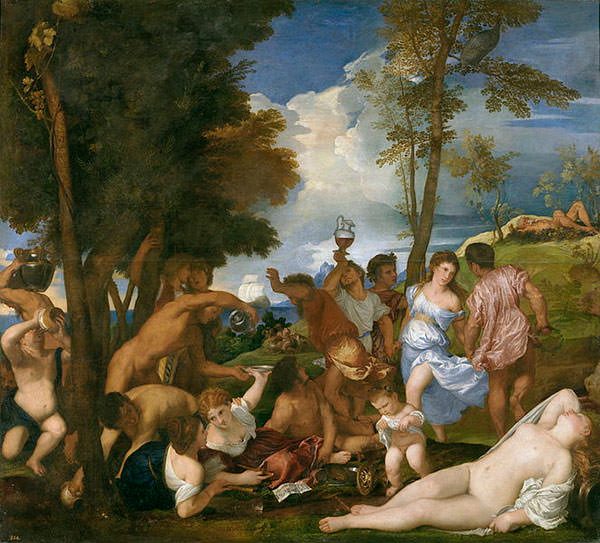
#10 He Was A Popular Subject In Hellenistic And Renaissance Art
The earliest depictions of Dionysus and his followers may be found on pottery pieces and there are rarely any large sculpture of the God before the Hellenistic period. Dionysian subjects however became common during this time with some well known examples being Dionysus Sardanapalus (325 BCE) and Hermes and the Infant Dionysus (4th c. BCE). Well-known Hellenistic sculptures of Dionysian subjects, surviving in Roman copies, include Barberini Faun, Belvedere Torso and Resting Satyr. Other famous depictions of Dionysus may be attributed to the period of Italian Renaissance, when the Bacchic subjects once again caught the imagination of the artists. Most notable works of this time include Michelangelo’s Bacchus (1496-97), Triumph of Bacchus (1629) by Diego Velázquez, and Titian’s Bacchus and Ariadne (1522–23) and The Bacchanal of the Andrians (1523–26).
Main Sources:-
“Hermes and the Infant Dionysus”, “Bacchus and Ariadne”, “The Triumph of Bacchus”, “Belvedere Torso”. Joy Of Museums Virtual Tours.

